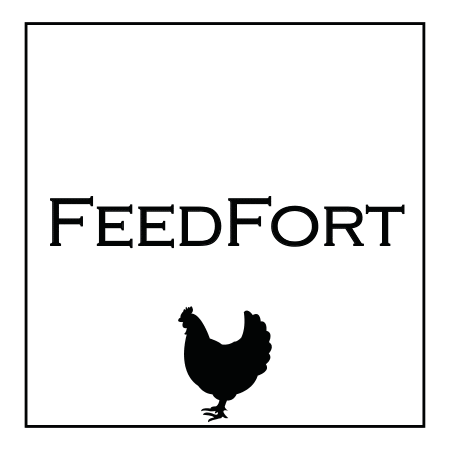low-maintenance poultry feeder – Resources
Low-Maintenance Poultry Feeder
Benefits of a Low-Maintenance Poultry Feeder
At FeedFort, we understand the importance of efficiency and effectiveness when it comes to feeding your poultry. A low-maintenance poultry feeder offers several benefits that can significantly improve your poultry management routine. First and foremost, it reduces the time and labor involved in feeding your chickens. With our feeder, you can say goodbye to those early morning rush hours and manual distribution of feed. It also minimizes feed waste and spillage thanks to its slow descent feature, making your operation more cost-effective in the long run. Moreover, our solution deters rodents and pests, keeping your feed safe and reducing the risk of disease and spoilage. Collectively, these benefits contribute to healthier chickens and greater peace of mind for you.
Features to Look for in a Low-Maintenance Poultry Feeder
Durability: Opt for feeders made from sturdy materials like the 5052 Aluminum used in our FeedFort model. This ensures longevity and resistance against weather and rodents.
Automatic Operation: A feeder that utilizes technologies such as photocell sensors for opening and closing in response to light levels can significantly streamline your feeding process.
Rodent Protection: Features that prevent rodent access are crucial for maintaining feed hygiene and reducing disease risk.
Spillage Minimization: Look for designs that focus on reducing waste, such as slow descent mechanisms that carefully control the release of feed.
Types of Low-Maintenance Poultry Feeders
- Gravity Feeders: Simple designs that allow feed to flow down as chickens eat from the bottom.
- Treadle Feeders: Require chickens to step on a platform to open the feeder, offering rodent deterrence.
- Automatic Feeders: Like our FeedFort model, these use technology to regulate feeding times and amounts efficiently.
How to Clean and Maintain a Low-Maintenance Poultry Feeder
Cleaning and maintenance are straightforward with low-maintenance feeders. For our FeedFort model, periodic checks to ensure the photocell sensor is clean and unobstructed is advisable. A gentle wash with soap and water, followed by a thorough drying, is typically sufficient to keep the feeder in top condition. Regular inspection for wear and tear and timely replacement of any damaged parts will prolong the feeder’s lifespan.
Tips for Choosing the Right Low-Maintenance Poultry Feeder
Consider the size of your flock and the amount of feed you typically use. Larger flocks may benefit more from an automatic feeder like FeedFort that can handle significant quantities of feed and reduce the need for frequent refills. Assess the level of rodent challenge in your area and prioritize feeders with robust rodent deterrence features if necessary. Lastly, think about the environment where the feeder will be placed; our durable aluminum construction is ideal for both indoor and outdoor settings.
Cost Considerations for a Low-Maintenance Poultry Feeder
While the initial investment in a high-quality feeder like FeedFort might be higher than standard models, the long-term savings on feed waste reduction, labor, and rodent control can be substantial. It’s important to consider these ongoing savings when evaluating the cost of a low-maintenance poultry feeder.
Comparison of Manual vs. Automatic Low-Maintenance Poultry Feeders
Manual feeders, although inexpensive, require daily refilling and monitoring to ensure feed is available and fresh. They also offer little to no protection against pests and rodents. On the other hand, automatic feeders, though initially more costly, provide significant advantages in terms of labor savings, feed efficiency, and protection against rodents. Our FeedFort feeder exemplifies how technology can be leveraged to enhance poultry feed management, making it a worthwhile investment for serious poultry keepers.
In conclusion, investing in a low-maintenance poultry feeder like FeedFort can transform your poultry management experience. By focusing on the key features, understanding the different types available, and evaluating your specific needs, you can choose a feeder that not only saves time and money but also promotes the health and productivity of your flock. Embrace the convenience and efficiency of a low-maintenance feeder and enjoy the numerous benefits it brings to your poultry operation.
Additional Resources:
Viking Fridge Repair Round Rock
Viking Repair Abilene – Viking Refrigerator Repair Texas City
Viking Appliance Repair Pros
At Viking Appliance Repair Pros, we understand the importance of a well-functioning Viking fridge in Round Rock. Our certified technicians are well-equipped to handle any issue your Viking fridge may encounter, ensuring a hassle-free experience for our customers. With a commitment to customer satisfaction, we prioritize timely and reliable repairs, offering pocket-friendly solutions without any hidden charges. Whether it’s a minor adjustment or a major repair, our team is dedicated to providing long-lasting solutions for all your Viking fridge repair needs. With years of experience and a track record of satisfied clients, Viking Appliance Repair Pros is the go-to choice… Viking Fridge Repair Round Rock
Cost of Dryer Repair
Cost of Refrigerator Repair – Dryer Repair Cost
5 Star Appliance repair
+1 855-731-4952
5starappliancerepair.pro
When it comes to addressing the cost of dryer repair, 5 Star Appliance Repair understands the importance of providing transparent and affordable services to our valued customers. Our team of expert technicians is trained to efficiently diagnose and fix any issues with your dryer, ensuring that it operates smoothly and effectively. We prioritize quality service at competitive rates, with no hidden fees or surprises during the repair process. With over 20 years of experience in the industry, we have honed our skills to deliver exceptional results while keeping costs reasonable for our clients. At 5 Star Appliance Repair, we believe…

